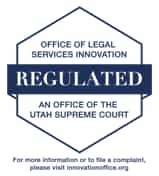Asset Protection & Business Planning
Utah Estate Planning Lawyers
Asset protection and business planning are two of the most important things that you can do to grow your company, expand your wealth, and create the most secure future possible for yourself and your loved ones. Every business owner needs a plan, and everyone who is building a nest egg needs to find ways to protect their assets.
The asset protection lawyers at Pearson Butler can help you make the most effective use of the legal and financial tools available in Utah—such as the Asset Protection Trust, which was enacted as a state law in 2013. Every situation is different, and the firm’s experienced team can help you to make the plan that is right for you, whether you’re a startup, an established enterprise, a wealthy individual, or just beginning to grow your money.
To find out about the personalized solutions that may be available to you, call (800) 265-2314 or contact the firm online.
Do You Need Asset Protection?
Asset protection involves working with an attorney who has experience with estate planning in order to guard your wealth and assets. It is a legal means of insulating assets, without engaging in illegal practices such as concealment, fraudulent transfer, contempt, tax evasion, or bankruptcy fraud. An attorney might work with you to purchase insurance, establish a trust, create a limited liability company for your business, or segregate risky and non-risky assets into different companies.
Because asset protection is more of a preventative measure, it is important to consider asset protection long before a claim or liability might occur. Do you need asset protection? If any of the following apply to you, then chances are that asset protection would be in your best interest.
- High-risk occupations: Those who work in high-risk occupations such as doctors, dentists, lawyers, engineers, and real estate investors benefit especially from asset protection planning. While asset protection should not be a substitute for liability and professional insurance, it will serve as a powerful supplement to these forms of protection.
- Significant wealth: Individuals and families of significant wealth are often the targets of lawsuits, simply due to having deep pockets. Asset protection can greatly reduce the financial incentive to litigate. Keep in mind here that there are situations that might put you into significant wealth rather quickly, and it is before these situations occur that you should consider asset protection—an inheritance, lawsuit, business sale, or entertainment contract, for example. So even if you do not consider yourself someone of significant wealth now, ask yourself if this might be a possibility in the near future.
- Moderate wealth: One common misconception is that asset protection is only for those who fall within the top 1% in wealth. However, asset protection may very well be more important for those with moderate wealth, or a net worth that falls between $500,000 and $5 million. This is because, for these individuals, a judgment against them of a few hundred thousand dollars could be crippling. So if you own anything of significant value, be it land, a home, a commercial building, equipment, vehicles, intellectual property, or patents, asset protection is definitely a good idea.
In short, many people can benefit from asset protection. The reason? Unanticipated events that can quickly dissolve wealth—such as lawsuits, divorce, health crises, failed business ventures, and personal bankruptcy—can and do occur, and there are ways that you can prepare ahead of time to minimize risk and protect your assets as much as possible.
When Is Asset Protection & Business Planning Necessary?
Asset protection and business planning are both necessary when you are trying to build something that will keep you and your family secure. As you grow your company, you need to make sure you protect those assets and your investments with the right legal tools.
The following are examples of business planning tools, and their benefits:
- A buy/sell agreement can keep your business out of the wrong hands in case any co-owners divorce or need to leave the business.
- Partnership agreements or shareholder agreements spell out the role everyone in the company will play.
- Employment agreements help to make sure every employee’s role is clearly defined.
- Incorporation, or the selection of the right business structure, can protect personal assets and allow you to get the most favorable possible tax treatment.
- A business succession plan can make it possible for your company to pass on to the next generation.
Asset protection is also important, both for business owners and anyone who is saving money and creating a nest egg for their future. Your assets, including the value of your company, could be lost if you have irresponsible heirs or if a large estate tax bill is charged upon your death. Lawsuits are another peril.
An experienced Utah asset protection lawyer can help you identify threats to your wealth or your business organization and assist you in using the right legal tools to minimize the potential for loss.
What Is Involved with Asset Protection & Business Planning?
Asset protection and business planning processes both must be tailored to your specific goals, your current situation, and your expected future needs.
An experienced attorney can:
- Negotiate and draft contracts like employment agreements and buy/sell agreements so you understand the contracts and make the best deal possible.
- Create an incapacity plan so your business and/or your investments and assets can be managed by a trusted person who you name as your agent or by a trustee if something happens to you.
- Create an asset protection plan so you don’t end up losing your wealth or your company because of threats to your assets.
- Create a legacy plan that allows you to quickly transfer your company or other assets so they can be appropriately managed by new owners.
- Create a plan to reduce or avoid estate taxes, which could reduce the wealth you leave behind and/or necessitate the sale of a business or company assets if there is not enough money to pay (many business owners have their money invested in the company and there are not sufficient liquid assets for an estate tax bill to be covered).
Asset Protection with Debit Cards and Credit Cards
Loss from fraudulent activity on credit cards is governed by the Truth in Lending Act and the Federal Reserve Board Regulations thereunder known as “Regulation Z”. Under these regulations the most a consumer will have to cover from an unauthorized transaction is up to $50.
Although some protection exists, debit cards are not as consumer friendly as credit cards. The protection for consumers who use credit cards is governed by the Electronic Funds Transfer Act and the Federal Reserve Board Regulations thereunder known as “Regulation E”. Under Regulation E a consumer’s liability for lost funds is limited as follows:
|
Unauthorized transfers INVOLVING the loss or theft of an access device (debit card) |
Unauthorized transfers NOT INVOLVING the loss or theft of an access device (debit card) |
| Up to $50 if the loss is reported to the financial institution within two days of the consumer learning about the loss of theft. | No liability |
| Up to $500 if reported to the financial institution more than 2 days after learning of the loss or theft but less than 60 days after transmittal of a bank statement on which the unauthorized transfer first appears. | No liability |
| Unlimited liability if the transaction is not reported to the financial institution for more than 60 days after the transmittal of a bank statement on which the unauthorized transfer first appears (until the financial institution is notified). | Unlimited liability if the transaction is not reported to the financial institution for more than 60 days after the transmittal of a bank statement on which the unauthorized transfer first appears (until the financial institution is notified). |
Hopefully, consumers are checking bank accounts and bank account statements on a regular basis. However, there are plenty of occasions when businesses or consumers use multiple bank accounts and are not diligent in their reviews.
Many banks go beyond the law and limit the amount of loss on debit cards so it is important that consumers understand their financial institutions’ policy on debit card fraud liability before you use any card.
FAQs About Asset Protection & Business Planning
Why is asset protection important for business owners?
Business owners face various risks that could jeopardize their personal and business assets, ranging from lawsuits related to business operations to personal financial troubles. Effective asset protection strategies help mitigate these risks by separating personal and business assets, shielding them from potential legal claims against the business. This separation can prevent creditors from reaching personal assets in the event of a lawsuit or business financial difficulty, thereby preserving wealth and ensuring continuity of personal and family financial security.
What are the risks of inadequate asset protection planning?
Without proper asset protection planning, individuals and businesses face numerous risks, including the potential loss of personal assets to creditors, litigation costs, and diminished financial security. A lack of structured asset protection can lead to complications during estate distribution, leaving assets vulnerable to legal challenges or unintended beneficiaries. Moreover, inadequate planning may result in higher tax liabilities and missed opportunities for wealth preservation and growth. Addressing these risks proactively through comprehensive asset protection strategies is crucial for safeguarding financial stability and achieving long-term goals.
What are the legal and ethical considerations in asset protection planning?
Asset protection planning must be conducted within legal boundaries to avoid accusations of fraudulent conveyance or other illegal activities. It is essential to work with experienced legal and financial professionals who understand the nuances of asset protection laws in different jurisdictions. Ethically, asset protection planning should aim to protect assets while respecting obligations to creditors and fulfilling legal responsibilities. Transparency and compliance with tax laws and regulations are critical to ensuring that asset protection strategies remain effective and ethically sound over time.
Pearson Butler understands how hard you have worked to build your company and your assets. Call (800) 265-2314 and gain access to the tools and information you need to protect all you have worked to achieve.





.jpg)








